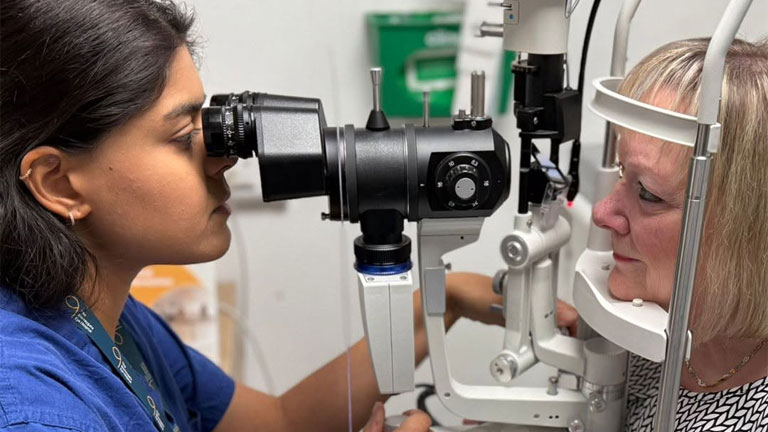
Running an optometry practice today is about more than just offering great eye care. Patients have endless options, and many will search online before ever walking through your door. That means your ability to reach, attract, and retain new patients depends on how well you use modern digital marketing strategies.
If your marketing plan still relies on word-of-mouth and occasional print ads, you might be missing out on a large part of your audience. The good news is that with a few smart and practical digital marketing tactics, you can stand out in your community and keep your appointment book full all year long.
Let’s look at the modern marketing tactics every optometrist should know and use in 2025 and beyond.
1. Build a Professional and Patient-Friendly Website
Your website is your digital office. For many patients, it is the first impression they have of your practice. A clean, professional, and mobile-friendly site instantly builds trust. Patients should be able to find information easily about your services, office hours, location, and how to book an appointment.
Include an online booking feature to make scheduling more convenient. Add a blog section where you can share simple, educational posts about common eye issues or new technologies in optometry. These not only help patients but also improve your website’s visibility on Google.
Make sure your website loads quickly and looks great on phones and tablets. A slow or outdated site can cause visitors to leave before they even learn about your services.
2. Optimize for Local Search
When people search for “optometrist near me,” you want your practice to show up first. This is where local SEO comes in.
Start by claiming and updating your Google Business Profile. Add accurate contact details, business hours, and high-quality photos of your clinic. Encourage satisfied patients to leave positive reviews, since Google values recent and authentic feedback.
Use location-based keywords on your website, such as “optometrist in [city name]” or “eye exam near [neighborhood].” Include them naturally within your website pages, blog posts, and even image descriptions.
Local SEO helps nearby patients find you right when they need eye care, increasing both walk-ins and online appointment requests.
3. Use Email Marketing to Stay Connected
Email remains one of the most effective and affordable ways to reach patients. Regular newsletters or appointment reminders can help keep your practice top of mind.
You can send monthly updates with helpful eye care tips, seasonal reminders for checkups, or promotions for new eyewear collections. Personalize your emails with the patient’s name and segment your list based on their needs. For instance, send reminders to parents before school starts, or follow-up emails after annual exams.
Automation tools make this process easier, letting you send the right message at the right time without spending hours managing it manually.
4. Create Engaging Social Media Content
Social media is no longer optional for healthcare providers. Platforms like Facebook, Instagram, and even TikTok can help you connect with both new and existing patients in a friendly and relatable way.
Post about your team, new technology, or behind-the-scenes moments that show your practice’s personality. Share educational posts about eye health, contact lens care, or blue light protection. Short videos or reels perform especially well, so consider doing quick “Did You Know?” segments that answer common vision questions.
The key is consistency. Posting once or twice a week is better than going silent for months. Respond to comments and messages promptly to show patients that you value communication.
5. Use Online Reviews to Build Trust
Online reviews are the new word-of-mouth referrals. Most patients will check reviews before booking their first appointment. Encourage happy patients to share their experiences on Google, Yelp, or Facebook.
You can do this by sending an automated follow-up email or text after a visit with a simple link to leave a review. Make it easy, and thank them for their feedback.
When you receive positive reviews, take a moment to reply and show appreciation. If you get a negative one, respond professionally and address the concern. This demonstrates that you care about patient satisfaction and are open to improving their experience.
6. Invest in Paid Advertising Wisely
While organic traffic is valuable, paid advertising can help you reach more people quickly, especially in competitive areas. Platforms like Google Ads and Facebook Ads allow you to target users searching for eye exams, glasses, or optometry services near you.
Start small by promoting specific services such as “back-to-school eye exams” or “new patient discounts.” Use local targeting to ensure your ads reach people in your area.
The best part about digital advertising is that you can track performance in real time. You can see how many people viewed your ad, clicked, and booked an appointment. This data helps you adjust your campaigns for better results over time.
7. Embrace Online Reputation Management
Your digital reputation is as important as your clinical expertise. Even one negative review or unanswered comment can affect how people view your practice. That’s why it’s essential to monitor your online presence regularly.
Tools like Demandforce can help you collect, manage, and respond to reviews across multiple platforms from one dashboard. This saves time and ensures consistency in how your practice communicates with patients.
A strong online reputation builds credibility, especially for new patients searching for a trustworthy optometrist.
8. Offer Virtual Consultations or Tele-Optometry
Telehealth has become a valuable tool for modern healthcare practices, including optometry. Virtual consultations make it easier for patients with busy schedules or mobility issues to connect with you.
You can offer pre-screening appointments, post-treatment follow-ups, or simple Q&A sessions online. Promote this service on your website and social channels to let patients know they can get professional advice without leaving home.
Tele-optometry doesn’t replace in-person visits but complements them by adding convenience and flexibility.
9. Track Results and Adjust Your Strategy
Successful marketing is all about learning what works and improving over time. Use analytics tools to track key metrics like website visits, online bookings, and conversion rates. Google Analytics and Google Search Console are great free tools for understanding your online performance.
Review these insights monthly. Which blog posts get the most traffic? Which keywords bring in new patients? Where are most of your leads coming from: social media, search engines, or ads?
By analyzing this data, you can make informed decisions and focus your efforts on tactics that deliver the best results.
10. Keep Educating and Adapting
The world of digital marketing evolves quickly. What works today might change tomorrow, so continuous learning is key. Follow reputable marketing blogs, join healthcare marketing webinars, or partner with digital marketing optometrists who specialize in healthcare.
Optometrists who adapt and learn stay ahead of competitors and meet their patients’ changing expectations. Whether it’s trying new video formats or experimenting with social media ads, being open to innovation helps your practice grow sustainably.


